Articles
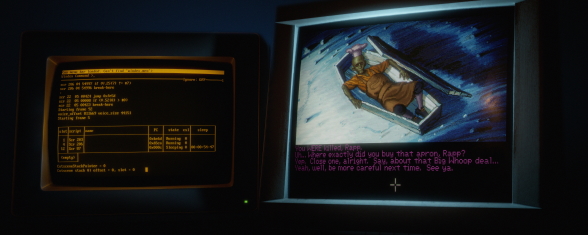
LucasArts’ First Words Read the story and download the prototype
While it might seem obvious to hear characters’ voices in adventure games these days, that was not the case when the genre first made its debut. With the necessary historical hindsight, we can accurately identify the major stages over the course of adventure games’ history. Text adventures to graphic adventures; keyboard interfaces to the arrival of the mouse; from repetitive deaths and restarts to Ron Gilbert’s Maniac Mansion (1987). Point and click adventures soon became a popular genre, though its characters remained dramatically silent.
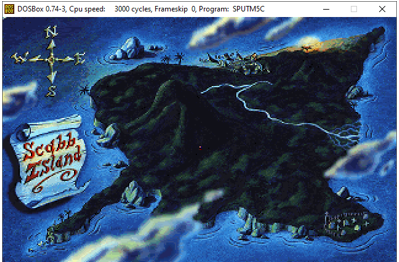

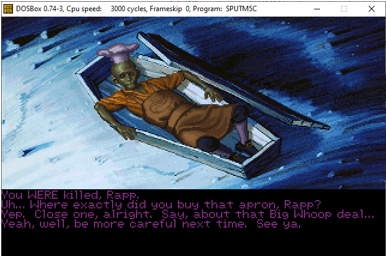
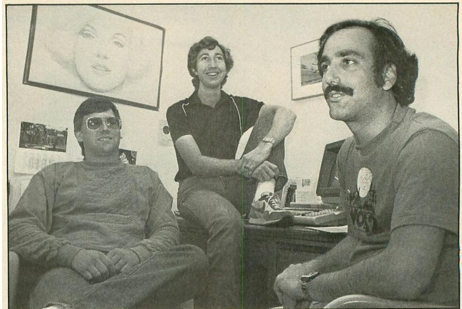
The limitations of memory space, storage, and equipment capable of producing digital sound made voice-overs a real challenge for developers, despite some more or less successful attempts before CD-ROMs arrived in the early 1990s. At LucasFilm Games, which has since become LucasArts, it became commercially and artistically impossible to ignore this "new technology" for dialog-based narrative games. The SCUMM engine did not natively support voice integration, and when Monkey Island 2: LeChuck’s Revenge hit stores in December, 1991, it narrowly missed the widespread adoption of CD-ROMs. The studio’s next adventure game, Day of the Tentacle (June, 1993), was the first voiced game from LucasArts, preceding Indiana Jones and the Fate of Atlantis by a few months.
In recent years, a few videos has appeared supporting the thesis of a much-rumored voiced version of Monkey Island 2: LeChuck’s Revenge dating back to 1992. An adaptation that would never make it past the proof-of-concept stage. Remember that the first time we heard Guybrush’s voice (courtesy of Dominic Armato) was in 1997 in Curse of Monkey Island. Aric Wilmunder (aka SCUMM Lord) recently uploaded a video detailing a voiced Guybrush anno 1992. We follow our hero in a a well-known Scabb Island cemetery scene, waking Rapp Scallion from the dead. Wilmunder and Ron K. Lussier portray the two characters (Rapp Scallion and Guybrush Threepwood respectively), the latter who worked as an artist on Sam & Max and a handful of Star Wars titles.
More than the surprise and joy of hearing a small piece of history through the developers’ interpretations of the characters, this version of Monkey Island 2 makes us, the fans of the series, ask a number of questions. Was this just a technical demo? Was a real talkie version of Monkey Island 2 planned? Above all, it brings forth questions about an era when LucasArts and the entire video game industry faced challenges voicing our favorite characters.
Intrigued, we went to interview a few LucasArts veterans, including Aric Wilmunder and Khris Brown, who shared old yarns from their time at the studio.
Mojo: Hi Aric, Can you explain to us what, exactly, the purpose of this “MI2 Talkie version” tech demo was?
Aric Wilmunder: Sure… I’ll give a bit of technical background… In 1992, SoundBlaster released a piece of code that could stream audio from a file, a capability we take for granted today. The problem was on a CD, it could take many seconds just to find and open a single file, so there were long pauses between each line. To solve this for the demo, we literally hacked into the SoundBlaster library so it could support one large file containing all of the voice lines. Next, I updated the text system to include the offset to where each voice line started. If the offset was found, it would call the SoundBlaster code, skip to that offset, and the voice would stream. I also updated the system so the talking animation would continue until that audio was completed. The final version of that code actually analyzed the voice audio and could generate lip-syncing for the characters.
Mojo: So in 1992, LucasArts officially wanted to produce voiced games?
Aric Wilmunder: We didn’t have a ’Voice’ department at the time, but Tamlynn Niglio had worked in the industry and got the equipment together. We selected Monkey Island 2 for the test since it had been our most recent release, and we selected the Rapp Scalion resurrection scene to record. We took the game scripts and made a list of all of the lines of dialog, and Tamlynn set about recording and editing these. I don’t recall if I or one of the Monkey Island 2 scripters created the builds. One of the key questions was whether you could mix and match audio lines recorded at different times and have them sound like a normal dialog, and the test proved both that we could do this technically, and that the dialogs flowed smoothly.
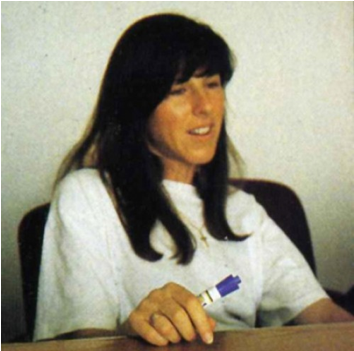
Mojo: If I remember correctly, Mindscape’s services were required due to technical problems with Loom? (A talkie version of Loom was released in 1992, but the dialog was just CD tracks)?
Aric Wilmunder: I hadn’t remembered that we did distribution through MindScape. Keep in mind that in the early days, there were few if any CD drives in the market, and much of the installed base was still 16 color EGA graphics. LFL had made a deal with Fujitsu to convert a number of our games to the FM Townes machine, so we had 256 color assets as a result. One of my goals was to leverage those assets to the PC market, so one project I ran was a 256 color version of Indy Last crusade that we bundled with the makers of the Paradise VGA card. This may have been how we ended with a deal with MindScape to release a CD game before the market really existed.
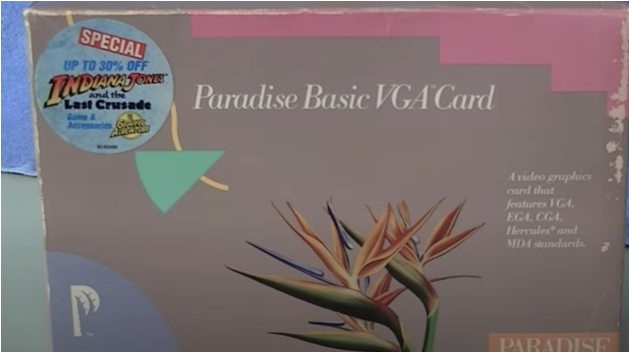
Mojo: So why not make a voiced version of Monkey Island 2 rather than starting with Day of the Tentacle?
Aric Wilmunder: Day of the Tentacle was still in production when the voice technology and CD distribution became an option, so it is the first game where voice was integrated during development. The sound team was doing great work in DOTT with iMuse for music coverage, so the addition of voice was amazing. Atlantis was already shipped and we added voice after the release of the CD version. I remember there were 8000 lines of text, and I think 5000 of these were spoken, so we started with a HUGE project. I remember one day Judith Lucero stopped by and I was writing a Perl script filter because the voice team needed a list of all of the lines Indy spoke in caves so they could add echo effects. Judith convinced me to do a test where I exported all of the lines along with location, speaker, and a few other fields into a file, and she loaded these into a FileMaker database. Instead of having to write any code, you could do a quick search. This worked so well that the voice department developed their own sophisticated database for tracking assets and even for creating the Studio recording lists that they used for years.
For the entire video game industry (and LucasArts in particular, despite its affiliation with Lucasfilm), managing the shift towards voiced games was therefore not only a technical challenge, but also an artistic challenge. This is why we asked Khris Brown a few questions. She became one of the first voice casting director at LucasArts back in 1992.
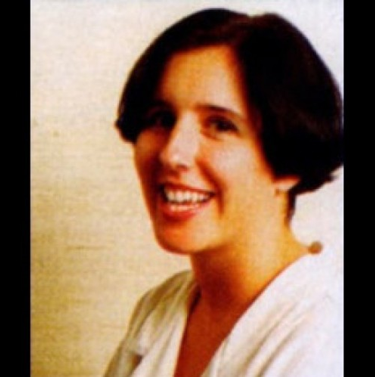
Mojo: Hi Khris, can you please explain what your job as a casting director was, after being the “Hint-line” guru at LucasArts?
Khris: Sam & Max was my first official casting job at LucasArts, and it was essential that we create voices that would please the older comic book fans while engaging new fans who would be introduced to the characters for the first time. We solicited auditions from all of the agencies and actors in Los Angeles and San Francisco. I would listen to them all on cassette tapes and then dub the auditions I liked onto a separate cassette tape for each character to present to Mike Stemmle & Sean Clark, the game designers. Steve Purcell would also listen, and I used to hang out in his office talking about the actors. My office was full of large plastic tubs of cassette tapes and a 2- cassette deck recorder. I listened and dubbed for two weeks – it was like something out of a 1980’s movie. We had hundreds of auditions and many callbacks, as we were doing something completely new. We needed actors who would be able to maintain the same level of enthusiasm and authenticity in their performance, even when reading many different dialog choices, and who would be able to imagine every character (with the director’s guidance) they’d be interacting with. Most animated shows are recorded in an ensemble style, with all the actors in the recording studio together, so that the actors can react to one another in the moment. With video games, every reaction is imagined, and coached by the director, to create a real moment between the characters when they meet in the game. Many video game characters’ actors never meet in real life. As a director, I imagine, create, and convey the emotional reality needed to spark the appropriate response in the actor, who is usually alone in the recording booth. Even today, we seek actors who are very comfortable with improvisation and can immediately create any needed emotion with authentic feeling. For Sam & Max and Monkey Island, we also needed people who had a deep sense of whimsy and good-natured humor. The games are very zany, but have an very innocent and pure heart. If an actor is cynical or sarcastic as a person, it will sometimes carry over into the sound of their performance, and that wouldn’t work for these games. We also look for people who are just as committed to a joyful player experience as we are, and who are comfortable experimenting and playing to find the right read. Extreme creativity requires extreme trust – there is no room for egos or anything less than 100% risk-taking. It is important for actors to feel safe so that they can be free.
Mojo: How can an actor’s voice support telling a story? Also, can the actors (Dominic Armato, Alexandra Boyd …) influence the script?
Khris: An actor’s voice can make or break the story. Their ability to inhabit and portray the character’s essential truth – whether they are friendly, optimistic, depressed, sinister, or full of hope, will convey more to the player than even the scripted words in the moment. If someone sounds sad in their tone of voice, but they are saying happy words, we, as humans, instinctively know that something is wrong. We hear our parents’ voices in the womb before we are born, and our senses are more attuned to changes in tone of voice than to any other aspect of human communication. It’s an evolutionary survival mechanism to allow us to asses whether there is any threat. The actor must be able to convey the character’s role in the story (e.g. the hero, the villain, the romantic partner, the comic relief, etc.) clearly to every player. If the game is text only, with no VO, each person playing will naturally imagine the correct tone of voice as they would understand it in their own individual mind. Once those lines are spoken as VO, however, the actor must be able to create a performance that will ring true to every different person playing the game. The only way that actors can do this is by believing in and inhabiting the truth of the character as if it is the actor themselves. We don’t have the actors “perform” the role – they live it. It is all imagination, but we often laugh and cry along with the characters in the script when we are recording it. If it is real for us, it will be real for the player. If an actor has been playing a role for a long time, they can definitely have an influence on the script, but usually only in the moment when we’re in the booth. I have had instances of actors saying, “This doesn’t feel right,” and they’re usually correct. If they’re living the role, they’ll know what’s right. This is an area for great diplomacy for an actor, however. For both the actor and myself, our duty is to bring the writer’s vision to life. For an actor to question a line in the studio, something will have to be extremely out of place, and it is always brought up with the deepest respect. Most of the time, it will be a line that the writer accidentally forgot to edit, or it will be something that will make sense once the writer explains it. We trust the writer as our guiding light in the same way that they trust us with performance. In more recent games, especially high-profile AAA games that are doing full performance capture, we’ll have table reads far in advance of shooting. In those cases, the script is often in a “workshop” phase, and actors have a great opportunity to contribute their thoughts. We try to always create a fellowship of deep mutual trust, and having an open line of communication is a big part of it.
Finally, above all, the Monkey Island 2: LeChuck’s Revenge proof of concept, amusing and historical values aside, allows us to realize that the arrival of the talking video game was a particular turning point for the industry, and a major challenge. A first step towards the commodification of video games which foreshadowed the massive work and multiplicity of talents that it takes to make today’s games.
In addition to this article, we exclusively give you the prototype talkie edition of Monkey Island 2: LeChuck’s Revenge. Since this version is a short proof of concept, it exists strictly for historical interest. The only goal you have in this beta is to bring Guybrush to the graveyard, open Rapp Scallion’s vault, and resurrect him. If you stray from the path, the program will inexorably crash.
To launch the prototype, you must install DOSBox (Mac, Windows, Linux, OS/2, BeOS), then…
- Create a folder named C:\DOSGAMES\
- Copy M2TALKIE folder (the one into the zip) into C:\DOSGAMES\
- Launch DOSBox
- Type Mount c C:\DOSGAMES
- Type C:
- Type CD M2Talkie
- Type Run